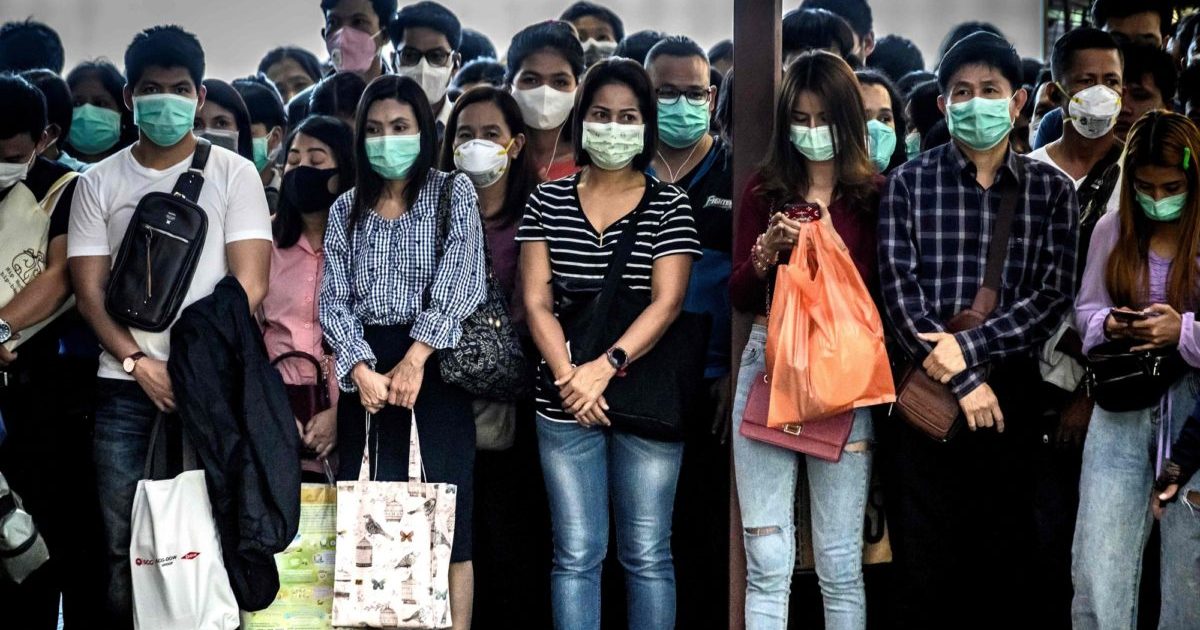- Coronavirus is more contagious than MERS and SARS by a factor of 12.
- One person can affect 1,728 people in a matter of days in places with low safety measures.
- Coronavirus has already killed more people than SARS in a shorter time frame.
According to official data from the government of South Korea, coronavirus is 12 times more contagious than MERS and 3 times more than SARS in facilities with weak measures to combat against virus outbreaks.
Coronavirus reproductive infection rate? A factor of 12
In a hospital in South Korea called “Cheongdo Daenam Hospital” that reported a local coronavirus outbreak, the reproductive rate of infection (R0) was 12.
For SARS and MERS, R0 was 4 and 0.9 respectively, significantly lower than the reproductive rate of infection of coronavirus.
An R0 indicates how many people one person could infect when confirmed with coronavirus.
If the reproductive rate of infection is 12, it means one person can affect 12 people, and the 12 people can affect 144 people, and 144 people can affect 1,728 people.
Already, the total number of coronavirus cases in South Korea has surpassed 1,600, and with a reproductive rate of infection, the number is expected to increase substantially in the near future.
As seen in countries like Iran and Italy, the high R0 of coronavirus makes it possible for “super contagion” to occur, as described by virologists.
One person could lead to the infection of 1,728 individuals within a span of days, leading to several countries outside of China reporting hundreds of new cases overnight.
University of Minnesota’s Center for Infectious Disease Research and Policy has found the fatality rate of coronavirus to be around 2.3 percent.
Yet, despite a lower fatality rate, medical journal BMJ reported that coronavirus has already killed more people than SARS and MERS combined.
SARS and MERS had a higher fatality rate but was not as contagious as coronavirus.
Official information from the World Health Organization (WHO) shows that the reproductive rate of infection of SARS was 2-4 even at its peak.
The WHO said in 2003:
A number of researchers have estimated the basic reproduction number by fitting models to the initial growth of epidemics in a number of countries. Their observations indicate that the SARS-CoV is less transmissible than initially thought with estimates of R0 in the range of 2- 4. Importantly, SARS is less transmissible than most other respiratory infections and therefore potentially more susceptible to control measures.
With more than 82,000 confirmed cases of coronavirus reported worldwide, coronavirus surpassed both MERS and SARS in virtually area in a much shorter time frame.
What’s next?
Top virologists have previously said that the golden window of containment for coronavirus in China was missed.
Ultimately, that led to local epidemics to breakout in South Korea, Iran, Italy, Thailand, and Japan, evolving the virus outbreak into a true global pandemic.
The highly contagious nature of coronavirus have prompted analysts at institutions like Citi and JPMorgan to predict the outbreak to continue to expand in the short-term, and impose a highly negative effect on the global economy.
The way coronavirus has crippled the economy of China and now Japan and South Korea is unprecedented, noticeably worse than MERS and SARS put together due to its high R0.
This article was edited by Samburaj Das.




